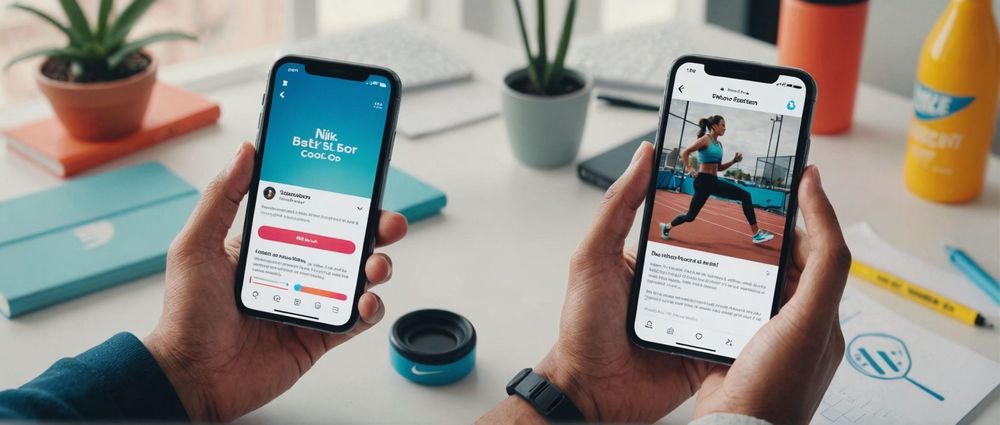Native advertising is a form of paid media where the ad experience follows the natural form and function of the user experience in which it is placed. In this article, we delve into some of the most engaging and enjoyable native advertising examples that have captured audience attention while seamlessly blending into their environments.
What Makes Native Advertising Effective?

Native advertising is highly effective because it doesn’t disrupt the user experience. These ads match the aesthetic and content of the platform they appear on, making them less intrusive and more engaging. Effective native ads offer genuine value and relevance to the reader, improving the likelihood of interaction.
Successful native ads often educate, entertain, or inform, providing a seamless transition between the ad content and the user’s existing interests. They are designed to appear as a part of the editorial flow, whether it’s on social media, a news website, or a dedicated content platform.
BuzzFeed and Purina’s “Dear Kitten” Video Series
One standout example of native advertising is BuzzFeed’s collaboration with Purina. The “Dear Kitten” video series cleverly combines engaging and humorous content with subtle brand messaging. These videos feature an older cat giving life advice to a kitten, thereby creating relatable and genuinely entertaining content for viewers.
By embedding Purina’s brand into a series that feels like native BuzzFeed content, they’ve managed to achieve millions of views and widespread sharing. The content is enjoyable and memorable, making it a prime example of effective native advertising.
The New York Times and Netflix’s “Orange is the New Black” Partnership

The New York Times and Netflix teamed up to create a long-form sponsored article about women in prison that tied into the launch of the new season of “Orange is the New Black.” This partnership showcased in-depth reporting that captured the essence of the show without overtly selling it.
The article was rich with interviews, multimedia, and compelling storytelling, making it more than just an ad. It offered real value to The New York Times readers, creating an engaging and informative piece that felt like genuine journalism rather than advertising.
Instagram Stories and Sponsored Content

Instagram Stories have become a popular platform for native advertising. Brands like Nike and Airbnb have effectively used this feature to create sponsored content that feels authentic and engaging. The format allows for short, visually appealing messages that blend seamlessly with users’ regular content.
For instance, Nike often shares athlete stories and behind-the-scenes content that inspire their audience while subtly promoting their products. Similarly, Airbnb shares captivating travel stories and experiences, making their ads feel like organic content.
The Washington Post’s “C3” Content
The Washington Post has a native advertising unit known as “C3,” which stands for Content that Connects and Converts. One of their standout campaigns involved IBM. This campaign was a series of native ads focused on the future of artificial intelligence and its impact on various industries.
The content was deeply informative and seamlessly integrated into the platform’s regular articles, providing readers with valuable insights while aligning with IBM’s brand messaging.
Forbes and the BrandVoice Program
Forbes’ BrandVoice program allows brands to publish sponsored content directly on the Forbes website. Companies like SAP and Microsoft have utilized this platform to share leadership thoughts, industry insights, and case studies. These articles appear alongside regular Forbes content, offering substantial value and blending into the reader’s content experience.
The success of the BrandVoice program lies in the quality and relevance of the content, often written by industry experts, ensuring it meets the standards of Forbes’ typical editorial pieces.
Conclusion
Native advertising, when done right, offers immense value to both brands and consumers by providing engaging, relevant, and non-disruptive content. From captivating video series to in-depth articles and authentic Instagram Stories, these examples show that native ads can genuinely resonate with audiences and enhance their content consumption experience.
FAQ
1. What is native advertising?
Native advertising is a type of paid media where the ad matches the form and function of the platform upon which it appears, making it less intrusive and more engaging for the audience.
2. How does native advertising differ from traditional advertising?
Unlike traditional advertising, which can be disruptive and easily ignored, native advertising blends in with the content that surrounds it, providing a more seamless and engaging experience for the audience.
3. Can small businesses benefit from native advertising?
Yes, small businesses can benefit significantly from native advertising as it allows them to showcase their products or services in a way that feels natural and engaging, helping to building trust with the audience.
4. How do I measure the success of a native advertising campaign?
The success of a native advertising campaign can be measured through various metrics such as engagement rate, click-through rate (CTR), conversion rate, and the overall ROI of the campaign.
5. Are there any risks associated with native advertising?
The primary risk with native advertising lies in the potential for misleading the audience. It’s essential to strike a balance by ensuring transparency and maintaining the integrity of the content to avoid damaging trust.